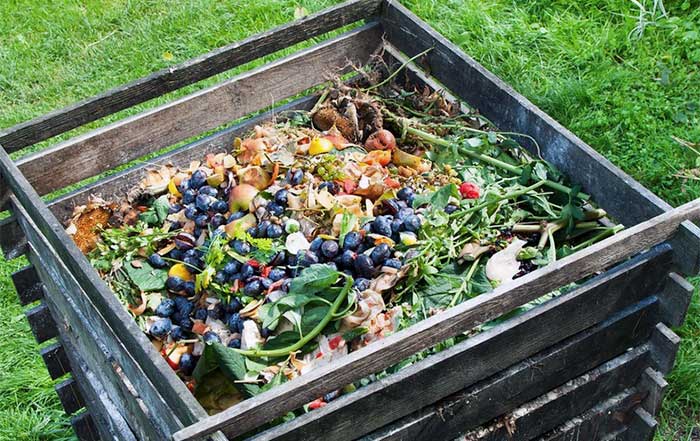In a world where the pace of environmental change accelerates alongside technological breakthroughs, societies across the globe are witnessing a radical transformation in energy production and consumption. The imperative to shift away from fossil fuels and embrace sustainable alternatives is no longer a distant ideal but a concrete reality that influences policy decisions, corporate strategies, and everyday lifestyles. This transformation is underpinned by a blend of technological innovation, economic foresight, and a collective commitment to safeguarding the planet. As the global community steps into 2025, the evolution of renewable energy is marked by measurable progress, transformative policies, and a convergence of scientific research and entrepreneurial vision. This article provides a thorough exploration of the renewable energy revolution, examining its multifaceted dimensions, technological advancements, and the interlocking roles of governments, businesses, and individuals in fostering a sustainable future.
A Changing Global Context: The Urgency of Transition
Across continents, communities are grappling with the tangible impacts of environmental challenges that demand immediate and decisive action. Severe droughts, unprecedented temperature records, and intensified storm events underscore the risks associated with continued dependence on fossil fuels. Regions that have long relied on traditional energy sources are now confronted with disrupted electricity grids and unpredictable weather patterns that strain both infrastructure and local economies. In low-lying coastal areas and regions marked by extreme climatic variability, there is a palpable urgency to reassess energy policies and implement resilient renewable solutions that can withstand these challenges.
The increasing frequency and severity of extreme weather events have placed the issue of energy security at the forefront of policy debates and strategic planning. Governments and private enterprises alike are compelled to invest in alternative energy systems that not only provide reliable power but also contribute to reducing environmental degradation. At the same time, communities are embracing sustainable practices that range from the installation of rooftop solar panels to the promotion of community-based renewable energy projects. By integrating renewable energy with long-term climate adaptation strategies, societies are crafting models of resilience that protect both economic stability and ecological health.
In this dynamic landscape, platforms like You Save Our World serve as a rallying point for individuals and organizations committed to advancing sustainability. This commitment is further exemplified by initiatives such as Achieving a Pristine Home and Protecting the Planet, which highlight the synergy between domestic energy practices and global environmental goals. With the urgency of climate imperatives pressing upon every decision, the shift toward renewable energy is not only an environmental necessity but also an opportunity for innovation and economic transformation.
The Economic and Societal Imperative for Renewables
The transition from fossil fuels to renewable energy sources has emerged as a cornerstone of economic resilience and societal well-being in 2025. Traditional energy systems, often subject to geopolitical turbulence and market fluctuations, have historically introduced uncertainties into national economies. In contrast, renewable energy offers stability by relying on naturally abundant resources such as sunlight, wind, and water, which are less vulnerable to sudden price shocks. This predictability has profound implications for long-term investment planning, enabling businesses to forecast operational costs with greater confidence and governments to design sustainable fiscal policies.
A vibrant renewable energy sector not only stabilizes markets but also generates significant public health benefits. The combustion of fossil fuels has long been linked to air pollution and adverse health outcomes, including respiratory and cardiovascular conditions that impose heavy burdens on healthcare systems. By shifting to cleaner energy sources, communities can reduce these health risks, leading to a decrease in medical expenditures and an overall improvement in quality of life. The societal dividends of renewable energy extend well beyond mere cost savings; they contribute to healthier, more productive populations and foster environments where economic growth is in harmony with environmental stewardship.
Employment opportunities in the renewable sector have surged in recent years, offering a welcome contrast to the volatility of traditional energy industries. New roles in manufacturing, installation, maintenance, and research are rapidly emerging, invigorating local economies and supporting a diverse workforce. The democratization of energy production—exemplified by small-scale installations and community solar projects—further empowers individuals to participate in the renewable revolution. For instance, communities embracing initiatives like Achieving Sustainable Electricity Use in 2025: Strategies and Insights for Work and Home are experiencing both direct and indirect economic benefits as renewable energy projects stimulate local job creation and enhance energy independence.
The economic rationale for renewables is further bolstered by the increasing influence of environmental, social, and governance (ESG) considerations on investment decisions. Financial institutions are actively redirecting capital toward projects that promise not only financial returns but also measurable environmental benefits. The alignment of market incentives with sustainable practices has led to an era where the pursuit of profit and the protection of the environment are mutually reinforcing. As forward-thinking investors and corporate leaders recalibrate their portfolios, renewable energy is recognized as a vital component of a stable, long-term economic strategy. For more detailed insights into global economic trends, platforms such as Forbes and Financial Times offer comprehensive analyses that underscore the financial viability of renewable energy investments.
Technological Advancements and Innovations in Renewable Energy
The rapid evolution of renewable energy technologies is a testament to human ingenuity and the relentless pursuit of sustainable solutions. Breakthroughs in energy storage, digital grid management, and smart infrastructure have transformed the landscape of power generation, enabling renewable sources to deliver consistent and reliable energy even in the face of variable weather conditions. The convergence of innovations in materials science, artificial intelligence (AI), and the Internet of Things (IoT) has given rise to smart grids that optimize energy distribution in real time, ensuring that the dynamic demands of modern societies are met with unprecedented efficiency.
At the heart of these advancements is the continuous improvement in the performance and affordability of renewable energy systems. Solar photovoltaic (PV) technology, for example, has undergone dramatic enhancements over the past decade, with cutting-edge semiconductor materials driving higher energy conversion rates and longer panel lifespans. The widespread adoption of solar energy is further supported by developments in battery storage, which address the intermittent nature of solar power by enabling the capture and distribution of energy during non-peak sunlight hours. The result is a resilient and flexible energy infrastructure that integrates seamlessly with both residential and commercial applications.
Wind energy has similarly benefited from technological innovation, as advances in turbine design and digital monitoring have increased the efficiency of wind farms. Modern turbines are now capable of harnessing wind energy in regions previously considered unsuitable for such projects, expanding the geographic footprint of renewable energy generation. The advent of offshore wind farms, equipped with floating platforms and advanced corrosion-resistant materials, has opened up new avenues for tapping into the powerful and consistent winds over large bodies of water. This technological progress not only enhances energy output but also reduces the overall cost of wind power, making it a competitive alternative to fossil fuels.
Platforms such as Renewable Energy World and BloombergNEF provide detailed analyses and case studies on the latest technological innovations in the sector, offering valuable insights for stakeholders and decision-makers. These sources illustrate how the synergy between technology and renewable energy is driving a global movement toward cleaner, more efficient power systems. The continuous stream of innovation in energy technologies is a critical factor in ensuring that the renewable energy transition is both economically viable and environmentally sustainable, positioning the world to meet the growing demand for clean energy in a rapidly changing climate.
The Power of Solar Energy
Solar energy stands as a beacon of the renewable revolution, offering a versatile and scalable solution that caters to both individual households and large-scale energy operators. The evolution of photovoltaic cells has enabled a significant reduction in the cost of solar installations, while improvements in efficiency and durability have enhanced their long-term viability. From urban rooftops to expansive solar farms, solar energy is redefining the way electricity is generated and consumed, providing a robust alternative to traditional energy sources.
Residential installations have gained momentum as homeowners seek to mitigate rising electricity costs and reduce their carbon footprints. The adoption of solar panels on residential properties is frequently complemented by financial incentives such as tax credits and net metering programs, which reward homeowners for generating excess energy. These initiatives not only alleviate the initial investment burden but also foster a sense of ownership and empowerment among individuals contributing to the energy transition. For those interested in further exploring sustainable home practices, resources like Environmental and Personal Benefits of a Clean Home offer a wealth of practical advice and insights.
At the commercial level, the deployment of utility-scale solar farms has revolutionized energy production by generating vast quantities of electricity that feed directly into national grids. These large-scale installations benefit from economies of scale and are often supported by government-backed financing mechanisms that further reduce operational costs. The integration of advanced battery storage systems has also addressed the inherent intermittency of solar power, ensuring that electricity is available during periods of low sunlight. This synergy between solar power and storage solutions creates a stable and reliable energy supply, reinforcing the notion that solar energy is not merely a supplementary resource but a cornerstone of modern energy strategies.
Detailed reports from institutions such as the International Energy Agency and the National Renewable Energy Laboratory underscore the transformative impact of solar energy on global electricity markets. These analyses reveal that solar installations are not confined to technologically advanced economies but are increasingly adopted by developing nations that see in solar energy an opportunity to leapfrog conventional energy systems. The universal appeal of solar energy lies in its accessibility, affordability, and potential to catalyze broader economic development—a testament to the power of human innovation in addressing the pressing challenges of energy security and environmental sustainability.
Harnessing Wind Energy
Wind energy has emerged as a formidable pillar in the renewable energy portfolio, leveraging the natural force of wind to generate electricity in both onshore and offshore environments. The evolution of wind turbine technology, characterized by advances in aerodynamic design and material strength, has significantly enhanced the efficiency and output of wind farms. In regions blessed with consistent wind patterns, these turbines provide a steady and reliable source of energy that complements other renewable sources such as solar and hydropower.
Large-scale wind projects are often located in areas where wind speeds are optimal, enabling the capture of vast amounts of energy with relatively low environmental impact. Countries with a long tradition of wind energy utilization, such as Denmark and Germany, continue to lead the way in demonstrating how wind power can be integrated into national energy grids with impressive results. Offshore wind farms, in particular, have garnered attention due to their ability to harness stronger and more consistent wind currents away from urban congestion. Floating turbine technology and innovative foundation designs have further expanded the potential for offshore wind, allowing installations in deeper waters where wind resources are abundant.
Wind energy is not solely the domain of large, centralized projects. Smaller wind turbines and distributed wind systems are increasingly deployed in rural and remote areas, offering communities the opportunity to generate their own electricity independently of traditional grids. This decentralized approach not only enhances energy resilience but also fosters local economic development by creating new jobs and stimulating regional investment. Those looking for insights into how wind energy can empower local communities may find valuable perspectives in articles such as Local Community Recycling Initiatives Paving the Way for Global Impact.
The strategic integration of wind energy with other renewable sources is further enhanced by sophisticated grid management systems that balance supply and demand in real time. Advanced forecasting techniques, powered by AI and IoT devices, enable operators to optimize turbine performance and ensure a consistent energy output despite natural fluctuations. As countries strive to meet ambitious renewable energy targets, the role of wind energy continues to be pivotal, as evidenced by studies from organizations like the International Renewable Energy Agency (IRENA) and research published on platforms such as MIT Technology Review.
Hydropower’s Continued Relevance
Among the diverse array of renewable energy sources, hydropower maintains a unique position due to its ability to deliver consistent baseload electricity while simultaneously offering ancillary benefits such as water management and flood control. By harnessing the kinetic energy of flowing water, hydropower projects provide a reliable and time-tested source of clean energy that has sustained communities for generations. From massive dam projects to small-scale run-of-river installations, hydropower embodies the dual promise of energy generation and environmental stewardship.
Countries with abundant water resources, such as Norway and Canada, have long relied on hydropower as the backbone of their energy infrastructures. In these regions, the natural landscape lends itself to the efficient generation of electricity, and the integration of hydropower into the national grid enhances overall energy security. Hydropower plants also play a vital role in regulating water supply, supporting agricultural irrigation, and mitigating the risks of flooding during periods of excessive rainfall. For readers interested in exploring the broader environmental implications of water management, the insights available through Imperative of Preserving Fresh Water: Addressing Scarcity and Water Shortages provide a comprehensive overview.
Modern hydropower projects are increasingly designed with an emphasis on minimizing ecological disruption. Innovations such as fish ladders, improved water-release systems, and environmentally sensitive design principles ensure that hydropower can coexist with the needs of local ecosystems and communities. The continuous refinement of these technologies underscores the commitment to balancing energy production with ecological preservation—a dual objective that resonates deeply in today’s environmentally conscious world.
The steady contribution of hydropower to the global renewable energy mix has been highlighted by international organizations and research institutions, which note that the technology remains a cornerstone in efforts to decarbonize energy systems. For additional perspectives on the critical role of hydropower in sustainable development, interested readers may refer to industry analyses on platforms like World Bank and EPA, where detailed discussions on environmental performance and regulatory frameworks further reinforce the value of this renewable resource.
Biomass and Geothermal: Expanding the Renewable Portfolio
As the global energy matrix evolves, a diverse array of renewable sources is being integrated to create a balanced and resilient system. Biomass energy and geothermal power, while often operating in the shadow of solar and wind, are emerging as crucial components that enhance the overall stability and sustainability of the energy landscape. Biomass energy, derived from organic materials such as agricultural residues, wood, and other waste products, offers a versatile solution that addresses both energy generation and waste management challenges.
The conversion of biomass into electricity and heat provides dual benefits: it reduces reliance on fossil fuels and contributes to more efficient waste management. Advances in gasification, anaerobic digestion, and other conversion technologies have increased the efficiency and cleanliness of biomass energy production. These improvements ensure that biomass can serve as a viable supplement to more intermittent sources, particularly in regions where agricultural activity generates substantial organic waste. For those interested in further exploring how sustainable practices can transform waste into wealth, the resource Enduring Value of Composting for Sustainable Progress offers valuable insights.
Geothermal energy, on the other hand, taps into the Earth’s natural heat to provide a steady, weather-independent source of power. Regions with significant geothermal gradients, such as Iceland and parts of New Zealand, have long harnessed this resource to meet both electricity and heating demands. Technological innovations in drilling, reinjection, and closed-loop systems have expanded the geographical reach of geothermal energy, enabling its deployment in areas previously considered unsuitable. The inherent reliability of geothermal power makes it an attractive option for complementing other renewable sources that are subject to natural variability.
While biomass and geothermal energy currently constitute smaller shares of the global renewable portfolio compared to solar and wind, their contributions are significant in terms of diversifying energy supply and enhancing overall grid stability. The continuous evolution of these technologies is driven by the same spirit of innovation that characterizes the broader renewable energy sector. As policy frameworks increasingly favor a balanced approach to clean energy, the strategic integration of biomass and geothermal power is expected to play an even more prominent role in ensuring long-term energy security.
Investments and Financial Strategies in Renewable Energy
The economic landscape in 2025 is unmistakably intertwined with the momentum of renewable energy investments, as both public and private sectors mobilize capital to secure a cleaner, more stable energy future. Investors, ranging from multinational corporations to local entrepreneurs, are increasingly recognizing the potential of renewable energy projects to deliver robust returns alongside measurable environmental benefits. The shift toward renewable energy is not merely an ethical imperative but also a sound financial strategy that mitigates risks associated with volatile fossil fuel markets.
Financial instruments such as green bonds, renewable energy certificates (RECs), and targeted subsidies have become instrumental in lowering the barrier to entry for renewable projects. These mechanisms provide the necessary capital to support large-scale installations and technological innovation, while also ensuring that the financial risks are distributed across a broad spectrum of stakeholders. Innovative funding models have enabled communities, especially in developing regions, to access financing that supports decentralized renewable projects. Resources like Embracing Sustainable Living and Optimizing Time Management in 2025 highlight how integrated financial strategies are making sustainable energy more accessible to a diverse array of participants.
Institutional investors and major banks are increasingly incorporating environmental, social, and governance (ESG) criteria into their investment strategies, which has catalyzed a significant reallocation of capital toward renewable energy ventures. Detailed analyses by sources such as Forbes and Financial Times have illustrated how investments in clean energy are outperforming traditional sectors, thereby reinforcing the notion that sustainable energy is synonymous with long-term economic stability. The positive feedback loop between renewable energy investments and technological advancements is expected to accelerate over the coming years, further solidifying the role of clean energy in global financial markets.
Government and Corporate Responsibility in Driving Sustainable Change
The pursuit of renewable energy solutions in 2025 is supported by a robust framework of governmental policies and corporate initiatives that emphasize sustainability, accountability, and long-term resilience. Governments are adopting ambitious renewable energy targets and enacting legislation that both incentivizes clean energy adoption and phases out the subsidies for fossil fuels. Regulatory reforms are complemented by clear policy directives that prioritize the development of renewable infrastructure, streamline permitting processes, and promote research and innovation in clean technology.
Corporate entities have also taken up the mantle of environmental stewardship by integrating sustainability into their core business strategies. Multinational corporations and industry leaders—such as Apple, Google, and Siemens—are investing heavily in renewable energy projects, not only to reduce operational costs but also to bolster their reputations as socially responsible organizations. These companies are increasingly entering into long-term power purchase agreements (PPAs) with renewable energy providers, thereby ensuring a stable and predictable energy supply while also contributing to broader decarbonization goals.
For businesses seeking to align their operations with sustainability mandates, detailed insights are available through resources like Sustainable Business and Sustainability Leadership in 2025: Redefining Corporate Impact. These platforms offer comprehensive guidance on best practices, emerging trends, and innovative strategies that empower companies to navigate the complex interplay between economic growth and environmental responsibility.
Moreover, the rise of community-based initiatives and public-private partnerships has significantly bolstered the momentum of the renewable transition. Initiatives that promote shared ownership of renewable assets and decentralized energy production are not only democratizing energy generation but also ensuring that the benefits of clean energy are equitably distributed. By fostering collaboration between local governments, private enterprises, and community organizations, these efforts are creating a resilient energy ecosystem that reflects the diverse needs and aspirations of modern society.
The Role of International Cooperation and Partnerships
Global challenges demand global solutions, and the renewable energy revolution is no exception. International cooperation has emerged as a critical driver in scaling renewable energy technologies and harmonizing policy frameworks across borders. Multinational agreements, bilateral partnerships, and intergovernmental organizations such as the United Nations Environment Programme (UNEP) and International Renewable Energy Agency (IRENA) are at the forefront of fostering dialogue, sharing best practices, and facilitating technology transfer between nations.
These collaborative efforts extend beyond policy coordination to encompass joint research initiatives, cross-border infrastructure projects, and shared financing mechanisms that enable developing countries to leapfrog conventional energy systems. International bodies and high-level summits consistently underscore the urgency of coordinated action, with the aim of achieving ambitious renewable energy targets that reflect the interconnected nature of today’s global economy. For further insights into international renewable initiatives, interested readers can explore analyses on the World Bank and EPA websites.
The partnerships forged through international cooperation are essential for addressing the multifaceted challenges of renewable energy integration, from technological standardization and grid synchronization to environmental regulation and market stabilization. In an increasingly interconnected world, these collaborative endeavors serve as a blueprint for how nations can collectively address global energy challenges while fostering an environment of shared prosperity and mutual support.
Integrating Social Equity in Energy Transitions
The renewable energy transition, while primarily driven by technological and economic imperatives, is also intrinsically linked to broader social equity considerations. As the global community pivots away from fossil fuels, there is an increasing awareness that the benefits of clean energy must be distributed equitably across different segments of society. Historically marginalized communities, which have often borne the brunt of environmental degradation, are now being integrated into the renewable energy narrative through targeted policies and inclusive development strategies.
Programs that facilitate community ownership of renewable energy assets—such as cooperative solar projects and localized microgrid initiatives—are gaining traction as a means to ensure that the economic and health benefits of clean energy are accessible to all. These initiatives empower local residents to take charge of their energy futures while simultaneously reducing energy costs and fostering community resilience. Initiatives like Local Food Sourcing: A Cornerstone of Sustainable Living highlight how localized strategies can yield broad social and environmental dividends.
Educational programs and vocational training initiatives play a pivotal role in bridging the gap between technological innovation and community empowerment. By equipping workers with the skills necessary to participate in the renewable energy sector, governments and private organizations are laying the foundation for a more inclusive energy economy. The integration of social equity into energy policies not only enhances the legitimacy of the renewable transition but also ensures that economic gains are shared by all members of society.
Emerging Renewable Technologies and Future Prospects
Looking forward, the renewable energy landscape is set to be further diversified by emerging technologies that promise to extend the boundaries of what is possible. Beyond the established pillars of solar, wind, and hydropower, new frontiers in tidal energy, ocean thermal energy conversion (OTEC), and green hydrogen are being explored as viable complements to existing renewable solutions. These technologies, while still in the early stages of development, represent the next wave of innovation that could unlock new sources of clean energy and address niche market demands.
Tidal and wave energy harness the natural power of the ocean to generate electricity, offering the potential for predictable and consistent energy output in coastal regions. Although the technological challenges associated with these methods remain significant, ongoing research and pilot projects are steadily paving the way for their commercial viability. For those interested in the broader spectrum of environmental initiatives, resources such as Battling the Tide: Combating Plastic Pollution in the World’s Oceans provide context on how ocean-based projects are intertwined with environmental sustainability.
Green hydrogen, produced via renewable-powered electrolysis, is another promising frontier that could revolutionize sectors where direct electrification is challenging. By serving as a carrier of energy, hydrogen has the potential to decarbonize industries such as heavy manufacturing and transportation, offering a flexible and scalable solution that complements existing renewable infrastructure. As policy frameworks evolve to support these emerging technologies, the integration of green hydrogen into the global energy mix is expected to accelerate, thereby opening new avenues for innovation and sustainable growth.
Infrastructure and Smart Grid Developments
The transition to a renewable-dominated energy future is intricately linked to the modernization of energy infrastructure and the implementation of smart grid technologies. Upgrading transmission lines, constructing advanced distribution networks, and incorporating real-time data analytics into grid management are essential steps in ensuring that renewable energy can be seamlessly integrated into existing systems. The evolution of smart grids, powered by sophisticated sensors and AI-driven analytics, enables utilities to balance supply and demand dynamically, mitigate disruptions, and optimize energy flows across vast geographical areas.
Investment in grid modernization is critical not only for accommodating the variable outputs of renewable sources but also for enhancing overall energy resilience. Microgrids, which can operate independently during outages, are becoming increasingly popular in regions prone to natural disasters or grid instability. The development of high-voltage direct current (HVDC) transmission lines further facilitates the long-distance transfer of renewable energy, connecting regions with abundant renewable resources to those with high energy demand. For a detailed exploration of how these innovations are shaping a sustainable future, platforms like Energy Conservation and Home Electricity Generation: Shaping a Sustainable Future provide comprehensive analyses and case studies.
The integration of smart grid technology represents a paradigm shift in how energy is produced, distributed, and consumed. By leveraging advanced metering infrastructure and real-time monitoring, utilities can reduce energy waste, enhance reliability, and provide consumers with greater control over their energy usage. This transformation is emblematic of a broader trend in which digital innovation and sustainability converge, paving the way for an energy system that is both environmentally responsible and technologically sophisticated.
Educational Initiatives and Public Awareness
The success of the renewable energy revolution hinges on the collective understanding and engagement of all sectors of society. Educational initiatives that emphasize the technical, economic, and environmental aspects of renewable energy are critical for building public support and nurturing the next generation of innovators. From primary education programs that introduce the basics of sustainable living to specialized training courses that prepare workers for careers in renewable energy, the emphasis on education is a cornerstone of long-term success.
Public awareness campaigns and community outreach programs play an equally important role in demystifying renewable energy technologies and highlighting their tangible benefits. By showcasing real-world examples of successful renewable projects and articulating the broader economic and health benefits of clean energy, these initiatives inspire confidence and foster a culture of sustainability. Resources such as Environmental Awareness and Sustainability Education for a Prosperous Planet offer valuable tools and information that empower communities to become active participants in the renewable transition.
The role of media and digital platforms in shaping public opinion cannot be understated. By leveraging a diverse array of channels—from traditional news outlets to social media and dedicated sustainability websites—the message of renewable energy is being broadcast to audiences around the world. This multifaceted communication strategy not only raises awareness but also galvanizes action, ensuring that the momentum behind the renewable revolution is maintained well into the future.
The Path Forward for a Sustainable Energy Future
As the global community navigates the complexities of the renewable energy revolution in 2025, the convergence of technological innovation, economic pragmatism, and environmental stewardship paints an inspiring picture of a sustainable future. The evolution of renewable energy systems—from solar and wind to hydropower, biomass, and geothermal—is reshaping economies, empowering communities, and redefining the very nature of energy production. With robust investments, supportive policy frameworks, and dynamic international collaborations, the world is witnessing a transformative shift that aligns economic growth with ecological responsibility.
The journey toward a sustainable energy future is inherently multifaceted, demanding coordinated efforts from governments, corporations, and individuals alike. Whether it is through the adoption of smart grid technologies, the implementation of innovative financing models, or the creation of community-driven renewable projects, every stakeholder has a role to play in forging a resilient energy system that benefits present and future generations. As strategies continue to evolve and new technologies emerge, platforms like Embracing Organic Agriculture: A Pillar for Sustainable Living in 2025 and Embracing Unplugged Learning for a Sustainable Future underscore the importance of a holistic approach that marries innovation with social equity.
The comprehensive efforts to modernize infrastructure, foster international cooperation, and integrate social and economic equity into the renewable agenda signal a future where clean energy is not only a technological achievement but also a catalyst for a more just and sustainable global society. As nations recalibrate their energy portfolios and communities adopt practices that promote environmental responsibility, the promise of renewable energy stands as a beacon of hope—a testament to humanity’s ability to innovate in the face of adversity and to build a future that harmonizes with the planet’s natural rhythms.
For those committed to exploring and championing sustainable practices, further reading is available through insightful platforms such as Earth Day 2024: Planet vs Plastics, Effective Dispute Resolution: A Pathway to Sustainable Living in 2025 and Beyond, and The Urgent Need for Alternative Energy in 2025. These resources offer detailed explorations of the challenges and opportunities that lie ahead, ensuring that the dialogue around renewable energy remains vibrant and forward-thinking.
As this global journey continues, the renewable energy revolution serves as both a mirror and a roadmap—a reflection of our current challenges and a guide to a future defined by clean, reliable, and sustainable energy for all. In the face of mounting environmental pressures and evolving technological landscapes, the choices made today will determine the legacy of tomorrow, solidifying a future where energy, economic prosperity, and environmental integrity are inextricably linked.
For more comprehensive perspectives and practical strategies to achieve a greener tomorrow, readers are encouraged to explore additional insights available at Cultivating Sustainable Prosperity: The Rising Importance of Home Herb Gardens and Transforming Your Home into an Eco-Friendly Haven. These resources not only exemplify the actionable steps that can be taken at the individual level but also reflect the broader, transformative power of a united commitment to sustainable progress.
In the end, the path forward is illuminated by a shared vision of a world where energy systems are not only efficient and resilient but also harmonious with the natural environment. The renewable energy revolution is a journey marked by innovation, collaboration, and an unwavering dedication to a future where the prosperity of humanity and the health of the planet are mutually reinforcing. As the landscape of energy continues to evolve, the collective pursuit of clean energy remains an enduring promise—a promise that, with every investment, policy reform, and technological breakthrough, brings the world closer to realizing a sustainable, equitable, and vibrant future.
This comprehensive analysis underscores that in 2025, the global transition to renewable energy is not merely a technical evolution but a profound societal transformation that redefines economic models, community resilience, and environmental stewardship. Through robust public-private partnerships, innovative technological solutions, and a deep commitment to social equity, the renewable revolution is charting a path toward a future where every watt of energy produced is a step toward a more sustainable and just world.








